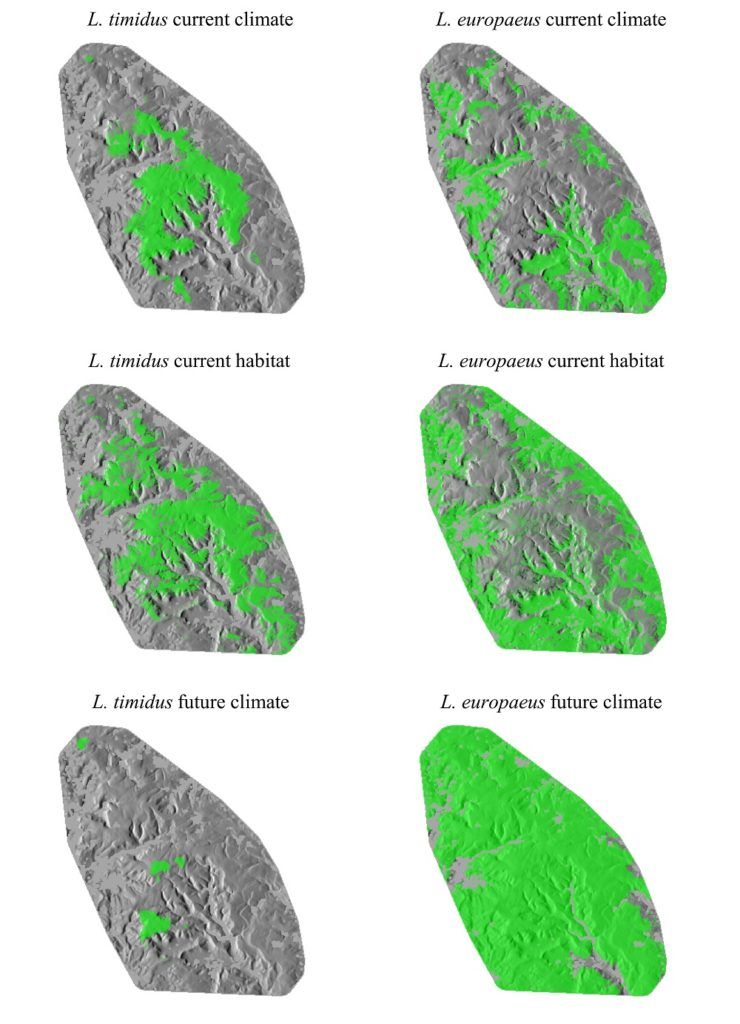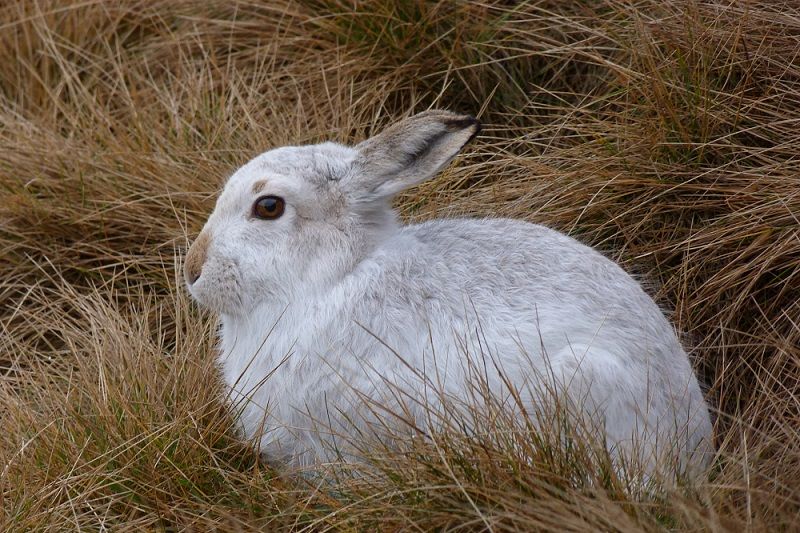Research shows brown hares are predicted to take over mountain hare habitat as temperatures rise
Climate change is putting the future of our Peak District mountain hares at risk. This important but alarming research has been carried out by Carlos Bedson, at Manchester Metropolitan University, with support from PTES. The Peak District’s altitude and colder climate is ideal habitat for mountain hares. But Carlos’ findings show that rising temperatures could be forcing the hares to migrate to the very hilltops as brown hares spread into the uplands.
Mountain hares have a circumpolar distribution, which means living in a range of habitats such as boreal forest, mires, heaths and moorlands. Across Europe the two hare species frequently compete for space, habitat and food resources. However, the Peak District is the only part of England where mountain hares and brown hares live side by side.

Carlos explains: “These two separate species are very similar, but have important biological differences. In particular, mountain hares are Arctic creatures and turn white in winter and as such, we’re exceptionally blessed that a small group of them make their home here in England.
“They’re what we call ‘Arctic relicts’ in the UK uplands and are an essential part of these ecosystems. However, as warmer temperatures are on the rise, these hares appear to be in trouble and our research is extremely important to understand their prospects for survival.
“European brown hares are a different species. Unlike their Arctic cousins, they’re brown all year round and are more prolific across the country. They’re what’s called ‘habitat specialists’, which means they live in more limited types of landscape. However, the grassland and agricultural landscapes they depend on are much more widespread in the UK, giving them much more space to occupy. European brown hares are also known to mate with, and consequently replace, mountain hares.”
Competition between mountain hares and brown hares
Carlos gathered and studied over 14,000 citizen science records of brown hares and mountain hares sent in by the public over 20 years. With these, he built a picture to understand which areas both species would prefer depending on the climate, topography and habitat. This meant that Carlos could look at how much competition there is between mountain and brown hares now, and how that competition would change in the future based on a prediction of global temperatures increasing by 2°C by 2050. A 2°C increase is just a global average. In the Peak District the forecast shows temperatures increasing by 3°C, and rainfall decreasing by a quarter. This means that the local climate and environment will change pretty substantially.
Carlos noted that these findings are worrying: “When you look at areas of the Peak District today with these temperatures and rainfall patterns, there are few or no mountain hares there. If warming happens even more rapidly, then mountain hare numbers may decline even more quickly.”
Shrinking range with rising temperatures
The research shows that in the Peak District, mountain hares are currently found across a large broad area of the uplands. These colder and wetter environments, tend to be heather and bog moorland. Brown hares are found in surrounding lower lying areas which are warmer, drier and predominantly grasslands.
As the climate warms, mountain hares will be forced to move up to the hill tops that are colder. This could shrink their range by nearly 90 per cent by 2050. At the same time, these rising temperatures will help the brown hare range to expand by 300 per cent, as they move towards the very same hilltops. This means mountain hares will be entirely surrounded by brown hares, resulting in increased competition between the two species. Worryingly, this pattern has already being seen in Sweden, Ireland and elsewhere, leading to substantial losses of mountain hares.
The research is being conducted in collaboration with People’s Trust for Endangered Species, Hare Preservation Trust, Queen’s University Belfast, Penny Anderson Associates, British Mountaineering Council and Action for Hares South West.
Find out more about Carlos and his work PTES is funding to safeguard the future of mountain hares.

